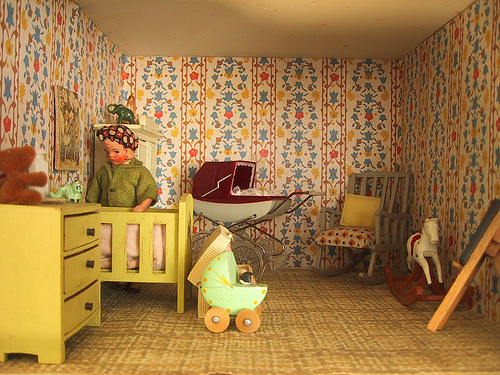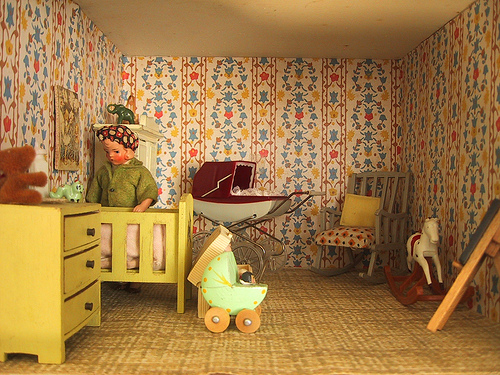 Raising a family in a small space can pose some sustainability challenges.Photo: The Shopping SherpaUntil very recently, my family of four lived in a two-bedroom, one-bath condo in a neighborhood a couple of miles outside of downtown Seattle. (We moved in August — five blocks from the condo in question — for reasons unrelated to the topic of this column.) The place, though not small by any global measure, would certainly be considered cramped by current American standards. (I like to think of it as smallish.) Our family also does not own a car. Living in a small home without a car limits the amount our family consumes and pollutes — and also saves us a lot of money. I tell you this not to bore you with the details of my particular situation (well, sort of to bore you with the details of my particular situation), but because our many years of small + carfree have exposed a few challenges. As it turns out, green living can sometimes get in the way of — well, green living. Here are some examples.
Raising a family in a small space can pose some sustainability challenges.Photo: The Shopping SherpaUntil very recently, my family of four lived in a two-bedroom, one-bath condo in a neighborhood a couple of miles outside of downtown Seattle. (We moved in August — five blocks from the condo in question — for reasons unrelated to the topic of this column.) The place, though not small by any global measure, would certainly be considered cramped by current American standards. (I like to think of it as smallish.) Our family also does not own a car. Living in a small home without a car limits the amount our family consumes and pollutes — and also saves us a lot of money. I tell you this not to bore you with the details of my particular situation (well, sort of to bore you with the details of my particular situation), but because our many years of small + carfree have exposed a few challenges. As it turns out, green living can sometimes get in the way of — well, green living. Here are some examples.
Being car-free requires us to shop when and where we have an opportunity. This means that if we happen to be near a store that sells items we are in need of, we take advantage. (It also means that we shop on the internets sometimes. OK, a lot.) There are certain stores we make an effort to patronize, but in general, we limit our purchases to places that are easy for us to get to and — since hopping from shop to shop isn’t a cinch — are likely to have what we want. As a result, resale shopping doesn’t happen as much as it could. Nor do Craigslist purchases, which require coordinating pickup times with Zipcar availability. And speaking of Craigslist …
When you live in a small space, you have to be very deliberate about the furniture you buy. You can’t buy just any old hutch; you need one that will fit in the corner you have available for it. You can’t buy just any old bench; you need one with specific dimensions — and with storage. Though it might be possible to find what you need online or at a yard sale/resale shop, the search often requires multiple visits to far-flung, sometimes transit-unfriendly locations. Score one for centrally located furniture shops with delivery.
Small spaces mean, not surprisingly, small storage. (In our particular case, we had no storage other than the closets inside the unit.) Thanks to generous (and stylish) friends, we’ve managed to borrow most of our kids’ clothing and gear. Unfortunately, hand-me-downs are not generally delivered one size/season at a time; they’re usually handed off in bulk. Storing a couple of years of outfits is problematic for people without a basement, a garage, or super-sized walk-in closets. Traveling across town with bags of onesies (or a baby swing!) every time your kid has a growth spurt is tough for folks who get around by bus or bike.
Saving disposable items (such as wrapping paper, gift bags, and boxes) for future reuse also becomes challenging in small homes. It’s tempting to get rid of items that cause clutter in the here and now, rather than saving them for some future useful purpose.
Bulky reusable items like cloth diapers also take up a fair amount of space — especially if you wash them yourself. Wet diapers are one thing, but the other kind usually require soaking. Soaking in the only toilet is not an option, especially for families with frequent visitors. The only other option is a bucket, which must be stored — but where? (And yes, I know there’s such a thing as a diaper service.)
Multi-family living also often means there’s no place to plant a garden or hang laundry. (In our case, there wasn’t even a place to park a bike.) Living without a car often means not traveling the extra two miles to the store that sells the most ethically produced option.
There’s more of course, but I think you get the idea.
The challenges posed by the small space/no car combo are by no means insurmountable; we developed workarounds for many of the issues I described, some of which I will likely share in a future column. But, the challenges are instructive. They remind us that for city dwellers, “going green” often manifests itself differently than it does for others. (Though certainly, residents of denser cities who have more choices in closer proximity will face fewer obstacles than we did.) They also remind us that living your values sometimes means deciding on the highest priorities and letting some of the other stuff go. Will your wallet or the planet be better off if you buy a car to streamline used changing-table purchases? Or if you move to a house with a backyard big enough for a vegetable garden, chickens, and a clothesline? Not likely.
So enjoy your cozy quarters (and bus/bike rides), do the best you can, and try not to sweat the small(ish) stuff.



